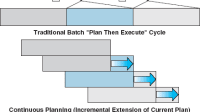The Jettison Engineering Trajectory Tool (JETT) performs the jettison analysis function for any orbiting asset. It provides a method to compute the relative trajectories between an orbiting asset and any jettisoned item (intentional or unintentional) or sublimating particles generated by fluid dumps to assess whether an object is safe to jettison, or if there is a risk with an item that was inadvertently lost overboard. The main concern is the interaction and possible recontact of the jettisoned object with an asset. This supports the analysis that jettisoned items will safely clear the vehicle, ensuring no collisions.
The software will reduce the jettison analysis task from one that could take days to complete to one that can be completed in hours, with an analysis that is more comprehensive than the previous method. It provides the ability to define the jettison operation relative to International Space Station (ISS) structure, and provides 2D and 3D plotting capability to allow an analyst to perform a subjective clearance assessment with ISS structures.
The developers followed the SMP to create the code and all supporting documentation. The code makes extensive use of the object-oriented format of Java and, in addition, the Model-View- Controller architecture was used in the organization of the code, allowing each piece to be independent of updates to the other pieces. The model category is for maintaining data entered by the user and generated by the analysis. The view category provides capabilities for data entry and displaying all or a portion of the analysis data in tabular, 2D, and 3D representation. The controller category allows for handling events that affect the model or view(s). The JETT utilizes orbital mechanics with complex algorithms. Since JETT is written in JAVA, it is essentially platform-independent.
This work was done by Mariusz Zaczek of Johnson Space Center; and Patrick Walter, Joseph Pascucci, Phyllis Armstrong, Patricia Hallbick, Randal Morgan, and James Cooney of the United Space Alliance. MSC-25271-1













